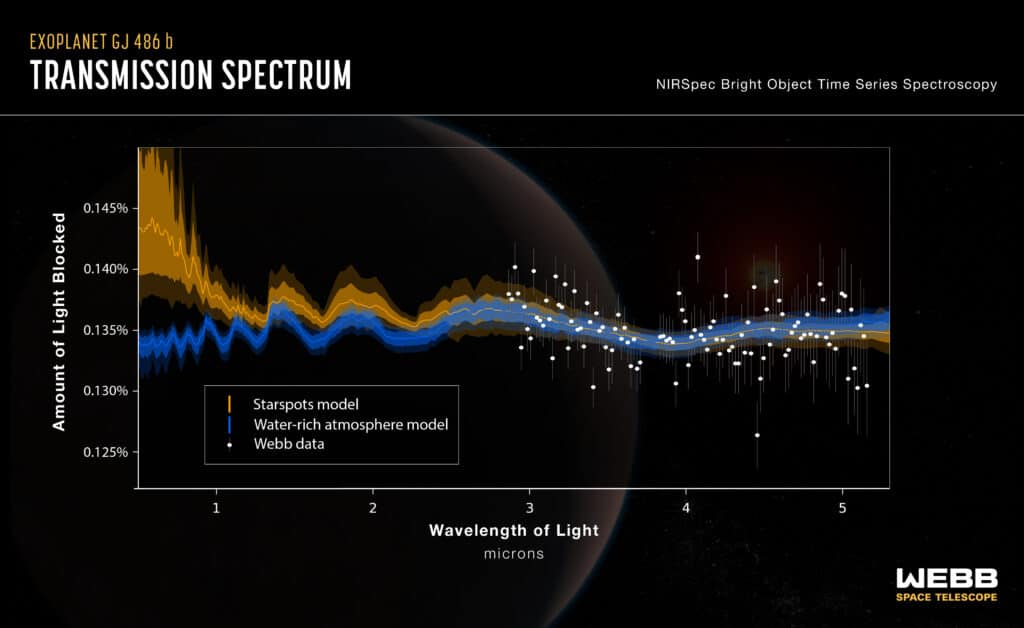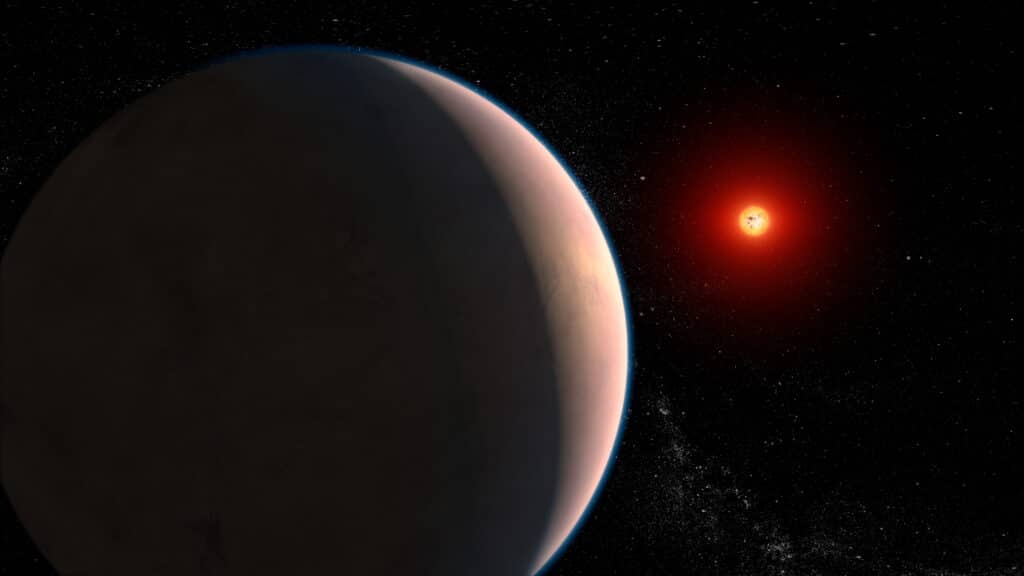Red dwarf stars are the most common stars in the universe, and rocky exoplanets are most likely to be found orbiting them. These stars are cool, so a planet needs to be close to it to stay warm enough to potentially have liquid water. However, red dwarf stars can release harmful ultraviolet and X-ray radiation that might destroy a planet’s atmosphere. Astronomers are trying to figure out if a rocky planet can keep an atmosphere in such harsh conditions.
Scientists used NASA’s James Webb Space Telescope (JWST) to study a rocky exoplanet called GJ 486 b. This planet is too close to its star to have the right temperature for liquid water, but the telescope spotted hints of water vapor. This could mean the planet has an atmosphere despite its hot temperature and closeness to the star. However, the water vapor might also be coming from the star itself, not the planet.
“We see a signal, and it’s almost certainly due to water. But we can’t tell yet if that water is part of the planet’s atmosphere, meaning the planet has an atmosphere, or if we’re just seeing a water signature coming from the star,” said Sarah Moran, the study’s lead author, in a NASA media release.
GJ 486 b is about 30% larger than Earth and three times as massive, which means it’s a rocky planet with stronger gravity. It orbits a red dwarf star in just under 1.5 Earth days and is expected to have a permanent day side and a permanent night side.

The scientists observed the planet passing in front of its star twice, each time for about an hour. They used three different methods to analyze the data and found a signal that suggests water vapor. But the water vapor could also be coming from the star. Even our Sun sometimes has water vapor in its cooler spots called sunspots. GJ 486 b’s host star is cooler than the Sun, so it could have even more water vapor in its cool spots, which could look like a planetary atmosphere.
To figure out if the planet has an atmosphere or not, more observations are needed. Scientists will use different instruments on the JWST to study the planet and try to determine if it has an atmosphere. If it does, that could mean the planet’s volcanoes are constantly replenishing the atmosphere with steam from the interior.
“It’s joining multiple instruments together that will really pin down whether or not this planet has an atmosphere,” said Kevin Stevenson, the principal investigator on the program.
The study has been accepted for publication in The Astrophysical Journal Letters.












